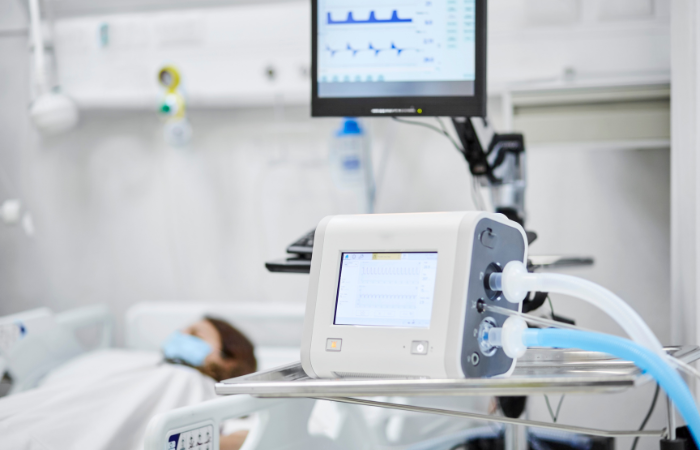
Good communication between doctors and patients is important, but patients connected to a ventilator for breathing cannot speak. Thanks to a team of respiratory therapists and speech pathologists at UAB Medicine, some of these patients are getting their voice back, making it possible to talk to loved ones again and more easily participate in their care.
Patients who can’t breathe normally due to injury or illness may undergo a procedure called a tracheotomy, in which an opening is created in the neck that allows a tube to be inserted into the trachea (windpipe) to help with breathing. That tube is connected to a machine called a ventilator that supplies oxygen. Because the tube runs below the vocal cords, it isn’t possible to speak.
Instead, patients may communicate by writing on whiteboards or electronic tablets, or they may mouth their words, use hand gestures, or even blink their eyes. None of these is a great solution – especially for patients who need complex medical care for a long period of time.
Finding Their Voice
To overcome this problem, a team of respiratory therapists and speech pathologists at UAB Medicine have begun using a new type of tracheal tube that allows some patients on ventilators to get their voice back. It’s known as a “talking trach”.
“Many patients on acute respiratory care have serious brain impairment or other conditions that make them unable to speak under any arrangement,” says Robert Johnson, director of Respiratory Care at UAB Medicine. “But we have some patients who have been on ventilators for months, and apart from having a tracheal tube in place, they would be completely capable of speech. In the simplest terms, we just needed to get some airflow across these patients’ vocal cords. A few months ago, we began using a new type of tracheal tube that has an additional tube above the main one. It’s possible to supply air through that tube, and a patient can operate it with a small thumb valve. That device forces out air that vibrates the vocal cords, allowing the patient to speak.”
Johnson says the new device improves the quality of life for patients and enables better communication. “The new tracheal tube makes a tremendous difference in communicating with them about their treatment, condition, and day-to-day needs,” he says. “But it’s also a big emotional boost for them. One of our patients who received this treatment spoke his first words after three months of silence. He told his wife, ‘I love you.’”
Johnson says this breakthrough was made possible by several medical specialties working together.
“The collaboration with the Speech Pathology team was the key to the whole plan,” Johnson says. “We worked with them to develop a care guide for how to use the new tracheal tubes, and we rely on them to identify which patients are candidates for this device and teach them to use it. They share the evaluation with the doctor and other practitioners, the attending physician writes the order, and a speech pathologist talks with the patient and the family. Our Respiratory Therapy team places the new device and sets the correct airflow, then the patient can work to begin speaking. So this was a successful combined effort to give our patients their voice back.”
A Lifechanging Difference
UAB Medicine Speech Pathology Clinical Specialist Kasey Guill says it’s been satisfying to participate in this collaboration.
“Working together, we’ve been able to break down some of the barriers that we previously could not overcome,” Guill says. “Our policy and procedures document was co-written by both teams, and we rolled out education to care teams, nurses, and physicians before we performed the first procedure. Putting the methods into action is where we most closely collaborated. We’ve had some great successes so far, and we learn something new with each device we place.”
Speech pathologists are trained in finding the most effective communication method for patients who have a tracheotomy. This new tracheal tube allows speech, but evaluating the patient’s verbal skills and capacity is an important step in determining who can use the new device. For patients who can, it makes a lifechanging difference.
“Patients who can only gesture or write on a whiteboard can get across the basics, but those limitations don’t allow for the details and nuances that help their care team understand everything about them,” Guill says. “We recognized that this new device could be a huge benefit for patients who are awake and alert and have good vocal cord closure and upper-body mobility. This might include organ transplant patients, trauma patients in the intensive care unit, and patients with breathing problems. If we can get them to a point where they can verbalize their needs, questions, and decisions, that may change the course of their medical care. And for patients living on a ventilator, the ability to use their voice can greatly improve their quality of life.”
